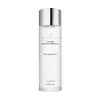What's inside
What's inside
 Key Ingredients
Key Ingredients

 Benefits
Benefits

 Concerns
Concerns

No concerns
 Ingredients Side-by-side
Ingredients Side-by-side

Water
Skin ConditioningGlycerin
HumectantSodium Hyaluronate
HumectantAloe Barbadensis Leaf Extract
EmollientPanthenol
Skin ConditioningAllantoin
Skin ConditioningPotassium Sorbate
PreservativeCamellia Sinensis Leaf Extract
AntimicrobialHamamelis Virginiana Water
AstringentCocos Nucifera Water
MaskingSodium Ascorbyl Phosphate
AntioxidantCaffeine
Skin ConditioningSelaginella Lepidophylla Extract
EmollientPhenoxyethanol
PreservativeEthylhexylglycerin
Skin ConditioningParfum
MaskingWater, Glycerin, Sodium Hyaluronate, Aloe Barbadensis Leaf Extract, Panthenol, Allantoin, Potassium Sorbate, Camellia Sinensis Leaf Extract, Hamamelis Virginiana Water, Cocos Nucifera Water, Sodium Ascorbyl Phosphate, Caffeine, Selaginella Lepidophylla Extract, Phenoxyethanol, Ethylhexylglycerin, Parfum
Yeast Ferment Extract
Skin Conditioning1,2-Hexanediol
Skin ConditioningNiacinamide
SmoothingBifida Ferment Lysate
Skin ConditioningOryza Sativa Extract
AbsorbentPearl Powder
Water
Skin ConditioningDiethoxyethyl Succinate
SolventPhenoxyethanol
PreservativeSodium PCA
HumectantEthylhexylglycerin
Skin ConditioningAdenosine
Skin ConditioningPolyquaternium-51
Skin ConditioningButylene Glycol
HumectantVinegar
Glycerin
HumectantCeramide NP
Skin ConditioningCholesterol
EmollientHydrogenated Lecithin
EmulsifyingXanthan Gum
EmulsifyingYeast Ferment Extract, 1,2-Hexanediol, Niacinamide, Bifida Ferment Lysate, Oryza Sativa Extract, Pearl Powder, Water, Diethoxyethyl Succinate, Phenoxyethanol, Sodium PCA, Ethylhexylglycerin, Adenosine, Polyquaternium-51, Butylene Glycol, Vinegar, Glycerin, Ceramide NP, Cholesterol, Hydrogenated Lecithin, Xanthan Gum
Alternatives
Ingredients Explained
These ingredients are found in both products.
Ingredients higher up in an ingredient list are typically present in a larger amount.
Ethylhexylglycerin (we can't pronounce this either) is commonly used as a preservative and skin softener. It is derived from glyceryl.
You might see Ethylhexylglycerin often paired with other preservatives such as phenoxyethanol. Ethylhexylglycerin has been found to increase the effectiveness of these other preservatives.
Glycerin is already naturally found in your skin. It helps moisturize and protect your skin.
A study from 2016 found glycerin to be more effective as a humectant than AHAs and hyaluronic acid.
As a humectant, it helps the skin stay hydrated by pulling moisture to your skin. The low molecular weight of glycerin allows it to pull moisture into the deeper layers of your skin.
Hydrated skin improves your skin barrier; Your skin barrier helps protect against irritants and bacteria.
Glycerin has also been found to have antimicrobial and antiviral properties. Due to these properties, glycerin is often used in wound and burn treatments.
In cosmetics, glycerin is usually derived from plants such as soybean or palm. However, it can also be sourced from animals, such as tallow or animal fat.
This ingredient is organic, colorless, odorless, and non-toxic.
Glycerin is the name for this ingredient in American English. British English uses Glycerol/Glycerine.
Learn more about GlycerinPhenoxyethanol is a preservative that has germicide, antimicrobial, and aromatic properties. Studies show that phenoxyethanol can prevent microbial growth. By itself, it has a scent that is similar to that of a rose.
It's often used in formulations along with Caprylyl Glycol to preserve the shelf life of products.
Water. It's the most common cosmetic ingredient of all. You'll usually see it at the top of ingredient lists, meaning that it makes up the largest part of the product.
So why is it so popular? Water most often acts as a solvent - this means that it helps dissolve other ingredients into the formulation.
You'll also recognize water as that liquid we all need to stay alive. If you see this, drink a glass of water. Stay hydrated!
Learn more about Water